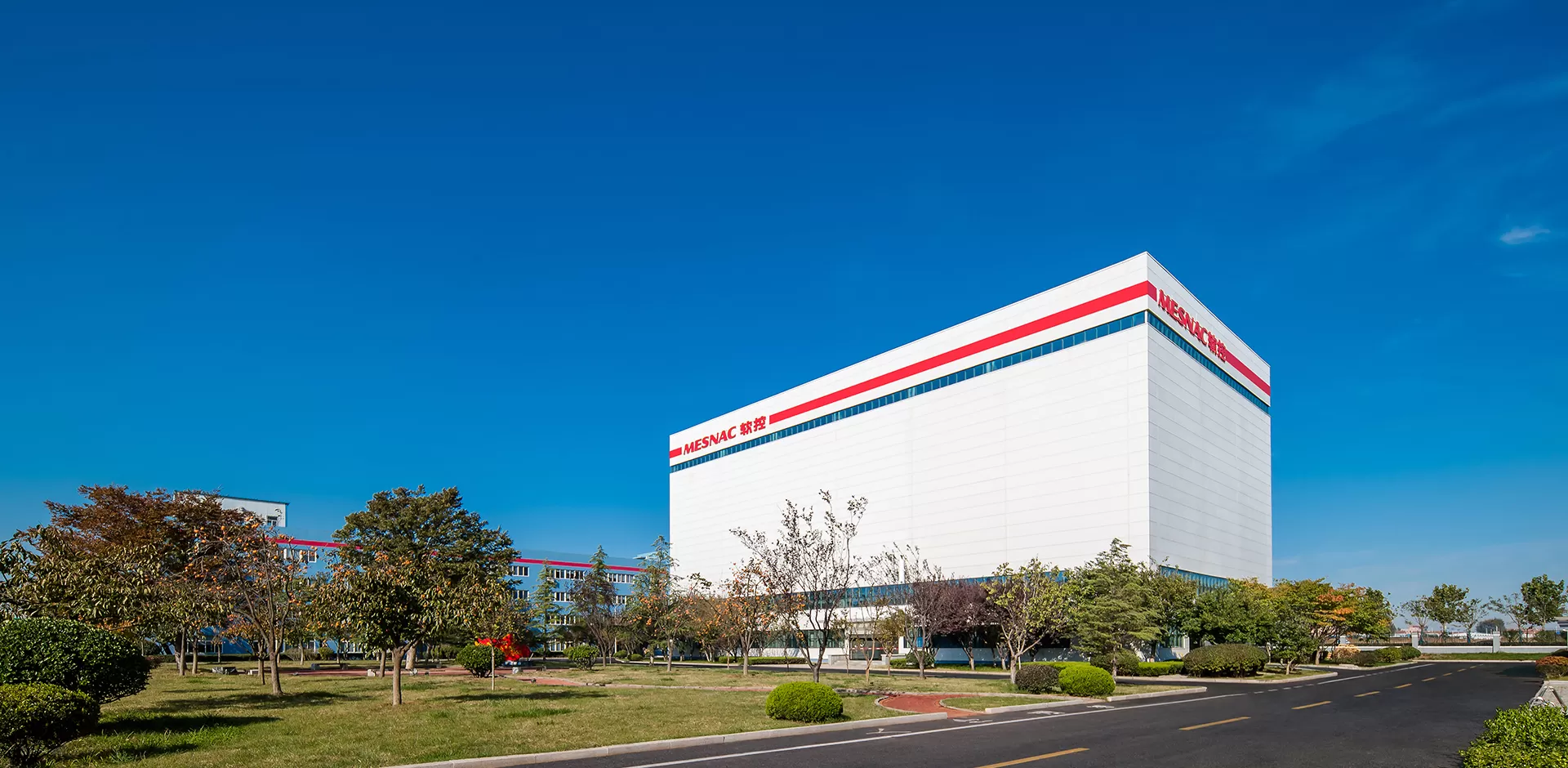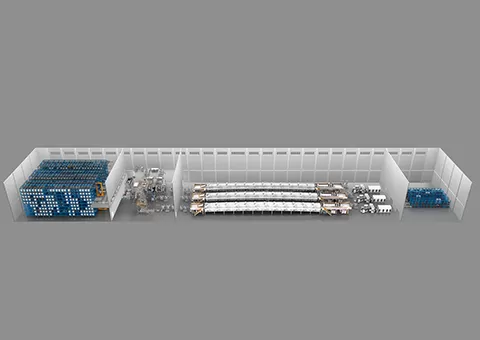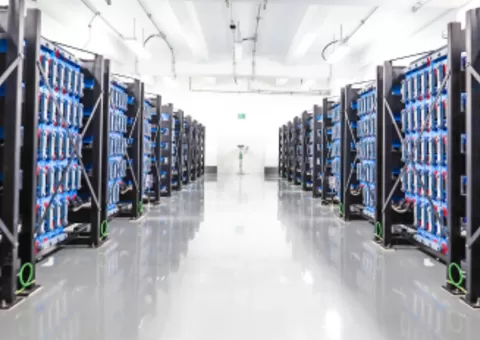What Is a High-Speed Disperser?
A high-speed disperser is a type of mixer used to rapidly break apart lumps of powder material, uniformly distributing and wetting them in a liquid. It is also used to dissolve soluble solids in a liquid.
How Does a High-Speed Disperser Work?
A high-speed disperser works on the principle of energy transfer. A disc-type blade is mounted at the bottom end of the mixing shaft and rotated at a relatively high tip speed. Tip speed is the speed at the outer tip or edge of the rotating disc. Tip speeds typical of high-speed dispersers are measured in feet per minute, calculated by multiplying the constant 3.14 times the diameter in feet of the disc times the revolutions per minute of the mixing shaft. The industry term for tip speed is peripheral velocity.
The solids and liquids are drawn into the rotating disc by the suction it creates. This suction usually results in a visible whirlpool from the top of the mixture down to the top of the disc. A similar whirlpool is created below the disc, extending from the bottom of the tank to the underside of the disc. The whirlpools are actually two individual vortices, although common industry practice refers only to the visible upper one as the vortex.
When the solids/liquid mixture enters the vortices and is sucked into the high-speed disc, the energy (horsepower used to drive the disc) is instantaneously transferred from the disc to the mixture. This intensely focused energy transfer creates tremendous, instantaneous velocity changes in the mixture as it progressively contacts the disc. Think of the mixture as a series of individual horizontal layers descending downward from the top and upward from the bottom onto the face of the rotating disc. As each layer contacts the disc, it is instantaneously accelerated from the slow-moving vortex into the high speed of the disc and projected outward away from the disc and toward the wall of the tank. The rapid tearing apart of layer upon layer of the mixture is shear force, commonly referred to as shear.
What Is the Difference Between a High-Speed Disperser and an Agitator?
Both the disperser and the agitator will mix. Mixers are sometimes compared to pumps. The performance of a pump is usually measured in the horsepower (HP) required for its gallons-per-minute discharge capacity. A high-speed disperser is a high-powered, low-volume pump. Considering its substantially higher horsepower per gallon requirement, a disperser is an inefficient mixer. An agitator is a low-powered, high-volume pump—it is an efficient mixer. A typical dispersion application (such as dispersing pigment to make paint) requires about 1 HP for every 10 gallons; in contrast, an agitator application (such as thinning the pigment dispersion with solvent) requires about 1 HP for every 100 gallons. Although the agitator is the more efficient pump, it does not create sufficient shear to disperse most solids into the liquids.
Moderate-shear high-speed dispersers operating at about half the normal blade speed of high-shear dispersers are sometimes used in place of agitators when some shear is required. Typically, the discs have larger teeth to promote better pumping and require about a third of the horsepower of a high-shear disperser but still three times more than an agitator.
When Do I Need to Use a High-Speed Disperser Rather Than an Agitator?
A high-speed disperser will generate the shear force necessary to rapidly de-lump powders in a liquid. This de-lumping process is called dispersion. The agitator is an efficient mixer, but it typically cannot generate sufficient shear to disperse powders, regardless of how long they are mixed. This is because the forces holding the agglomerates (lumps) together are stronger than the force of the mixer trying to pull them apart. Mixers can do an excellent job of holding dispersed (sheared) mixtures in suspension, but they typically cannot disperse (shear) the mixture.
You can learn more about this topic and the differences between high-shear mixing and homogenizing from this article, which highlights the pros and cons of both processes.
How Do I Select the Proper Size of High-Speed Disperser?
The size of a high-speed disperser is generally thought of in terms of horsepower. However, there are dispersers that are dimensionally very large but use relatively small amounts of horsepower. These are exceptions to the rule.
The horsepower of the disperser is related to the blade diameter and the anticipated load the blade will create at a given speed and resistance. The resistance is a function of the rheology of the dispersion as well as the viscosity and density. However, as the blade diameter increases, the horsepower increases disproportionately. For example, if a 12-inch diameter blade were to draw 20 HP in a non-Newtonian system (viscosity changes with shear), doubling the blade diameter could increase the HP demand by a factor of 5. That means a 24-inch diameter blade of the same design, working in the same product, would require 100 HP. The larger blade would also pump considerably more, so it would lend itself to working in a much larger (perhaps 5 times the volume) tank and producing a much greater amount of finished product in the same time period.
Horsepower requirements are interrelated with blade diameter, tank diameter, batch size, rheology, viscosity, and density. Variations outside recommended operating parameters usually result in compromises in performance, such as poor particle separation, extended dispersion times, and a decrease in quality of the finished product.
What High-Speed Disperser Safety Measures Must I Follow and Why?
Read the operation and safety instructions supplied by the manufacturer. If they are not available, call the manufacturer and request additional copies.
Be certain that all operators are properly trained on the use of, and drilled on the potential dangers involved with, the disperser.
Do not operate the machine unless all the appropriate safety features are in place and functioning properly. On hoist-mounted units that raise and lower the blade, these features include but are not limited to (a) mixing shaft guard, (b) tank holder with limit switch, (c) and limit switch on lift to prevent machine from operating with blade or shaft within reach of the operator.
The high-speed disperser is a very fast and powerful machine. Serious and fatal accidents can occur in a split second of carelessness. Human reflex is no match for the instantaneous danger of operating a disperser unsafely. Never sacrifice safety for convenience.






 English
English  中文
中文 



